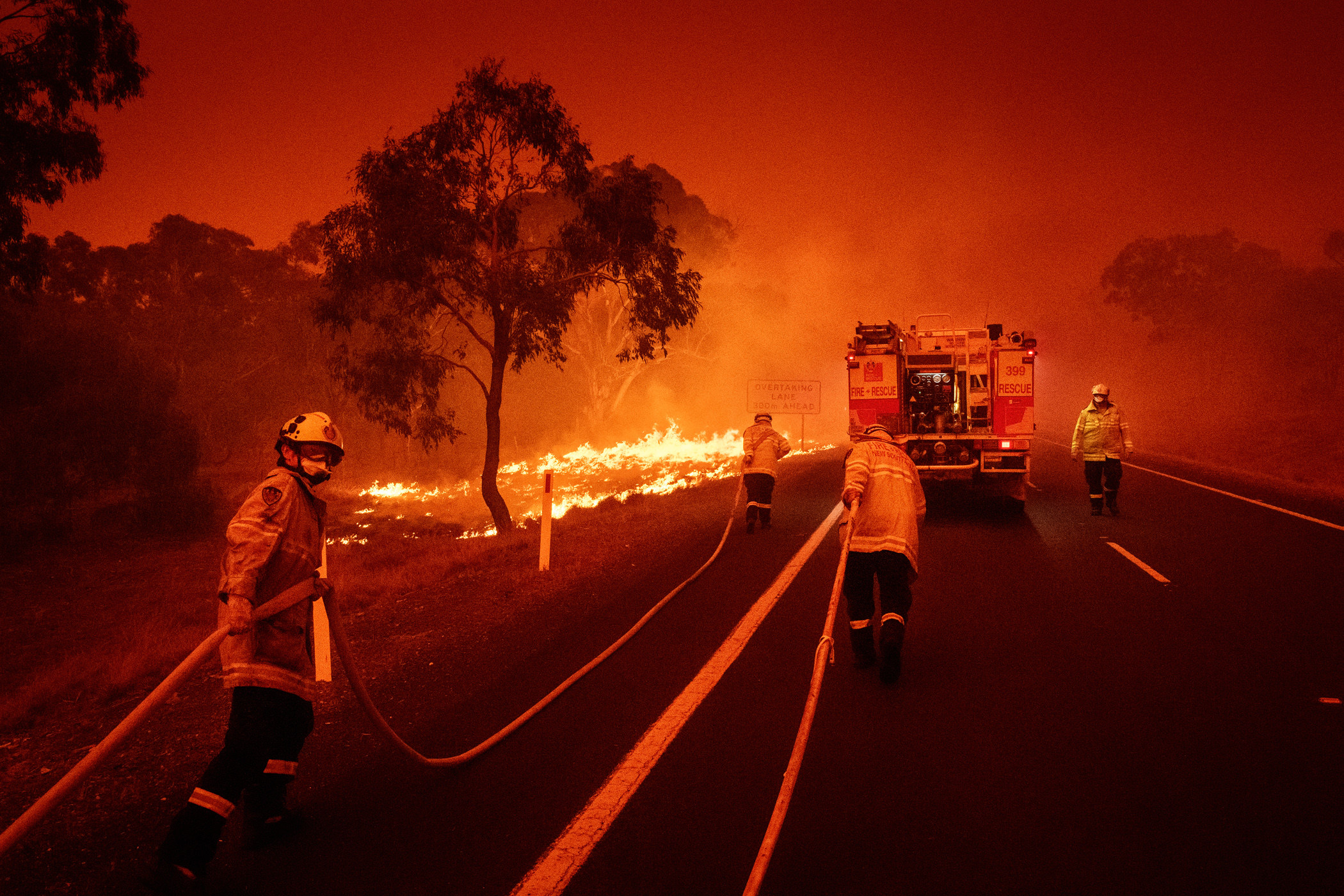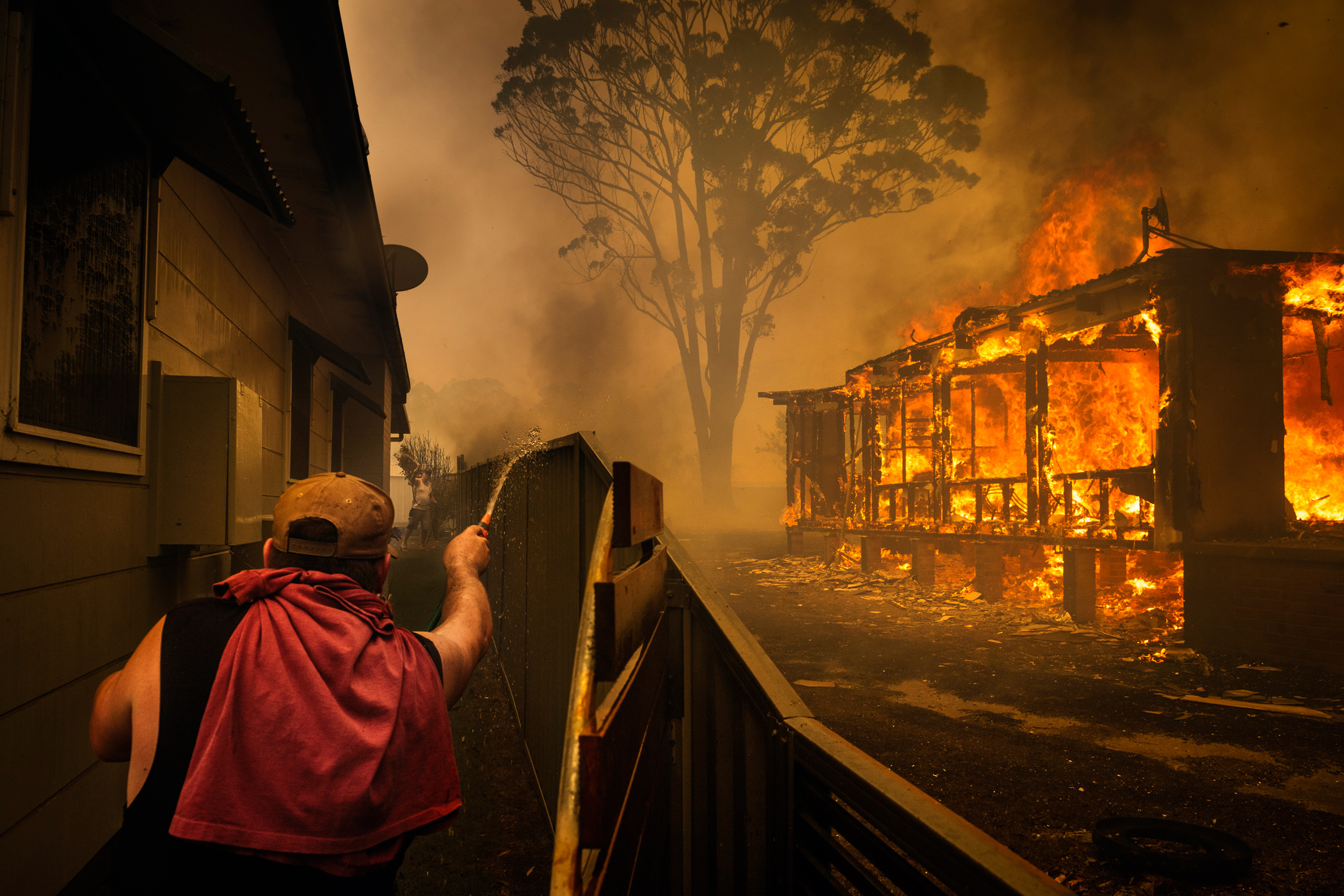If the Australian collective response during the Black Summer of 2019 - 2020 has taught us anything, it is that humans are without doubt the most dangerous species to ever inhabit the earth, but also the only species capable of saving it. And every living thing now depends on us.
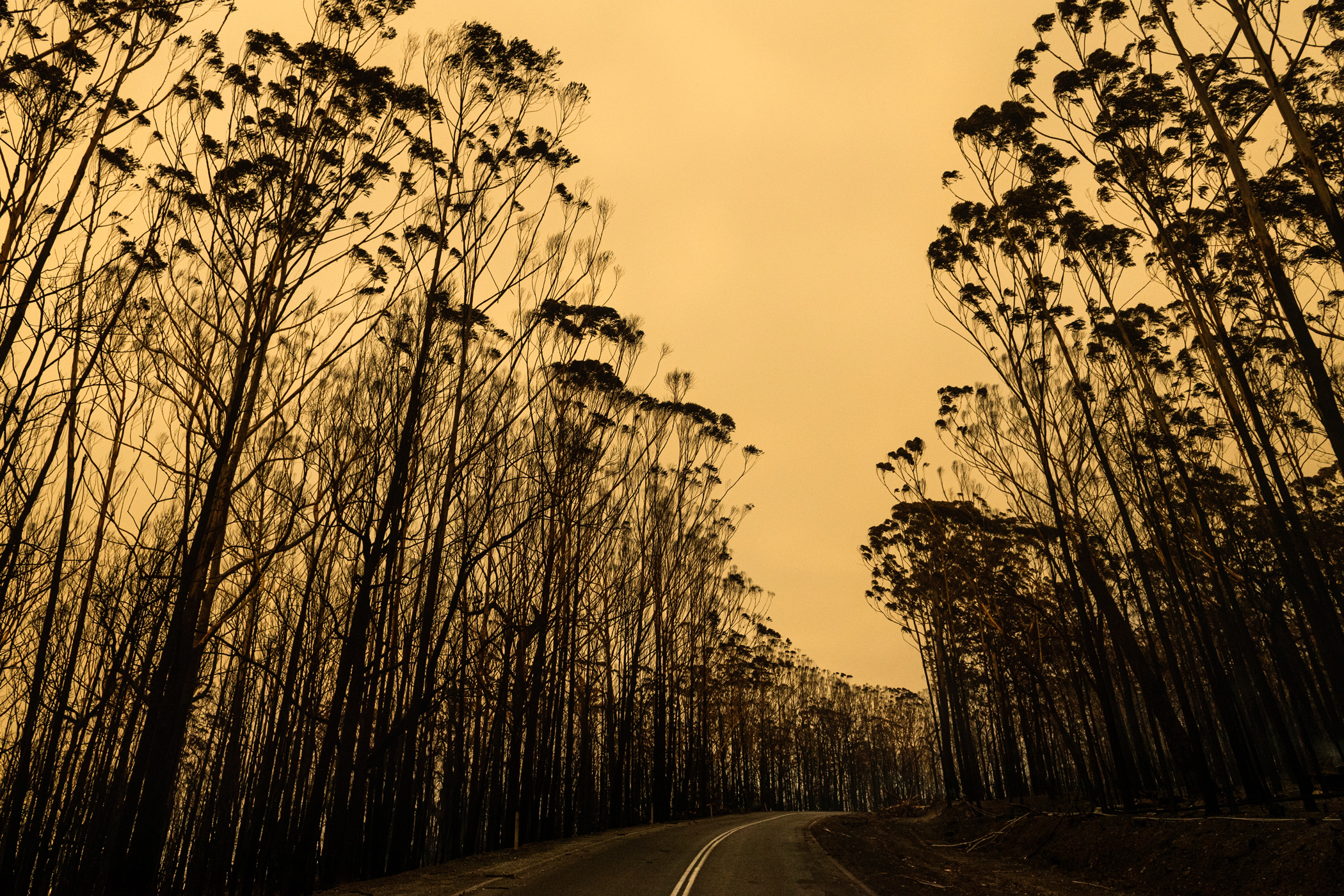
Burnt trees along Bendalong Road nr Manyana, NSW. 2 January 2019.
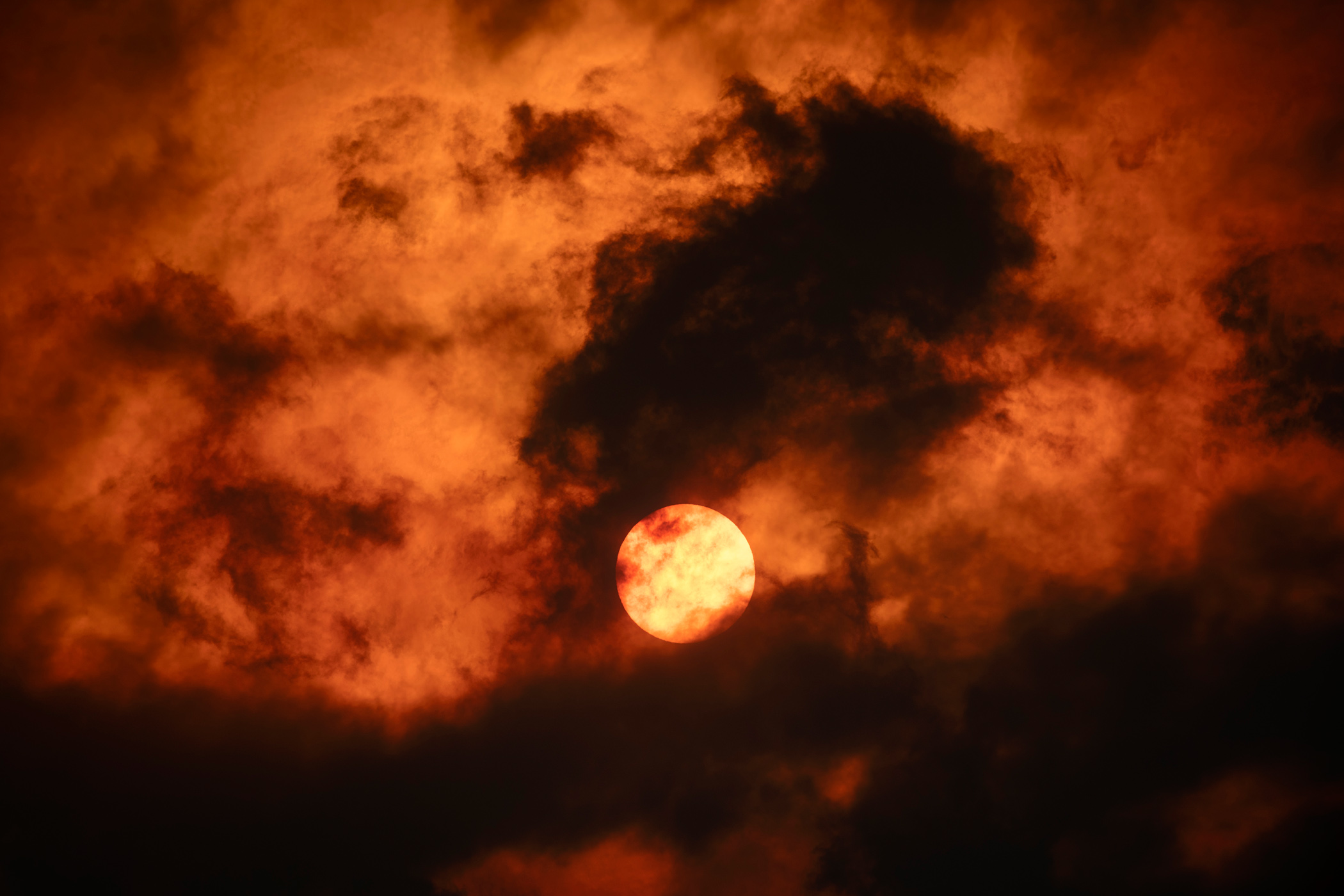
The sun is obscured by the Green Wattle Creek fire, south-west of Sydney, NSW. 2 December 2019.
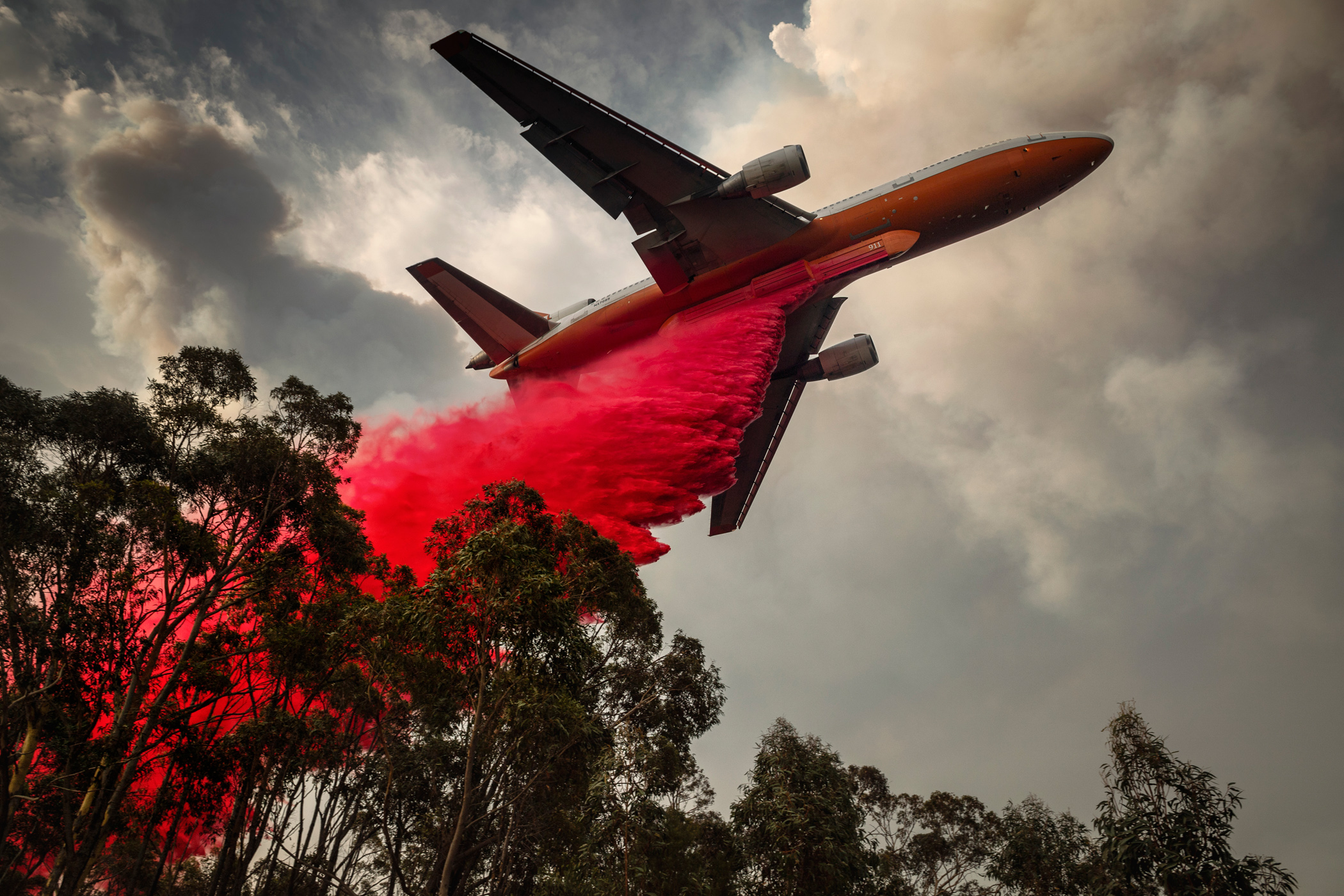
A firefighting Boeing 737 leased by the Rural Fire Service (RFS) drops fire retardant on the edge of the Hill Top community near Sydney, NSW. 21 December 2019.
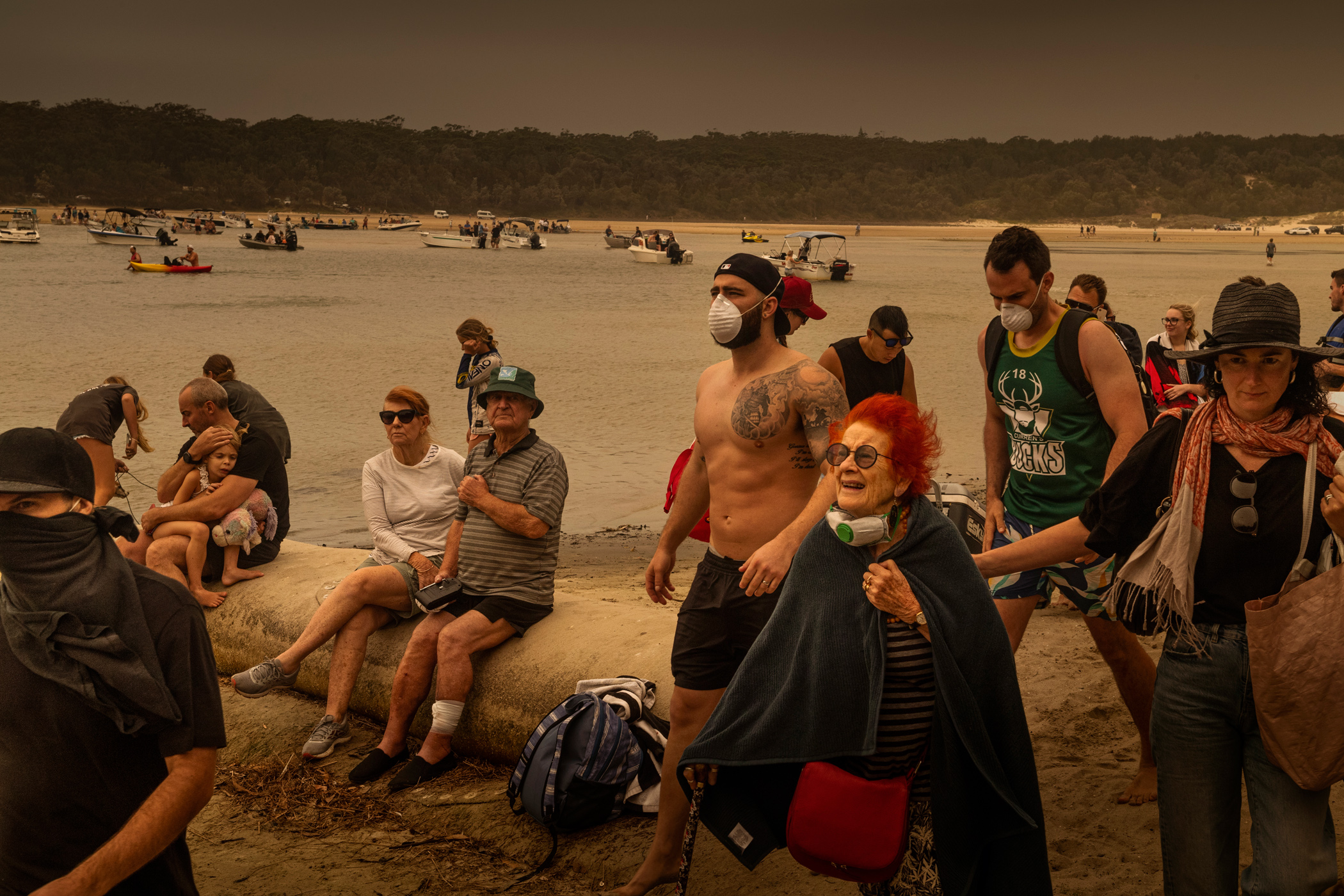
Tourists on Lake Conjola, a popular holiday destination, take refuge at the beach near the caravan park as the fire approaches from the south west threatening the town and destroying property. 31 December 2019.
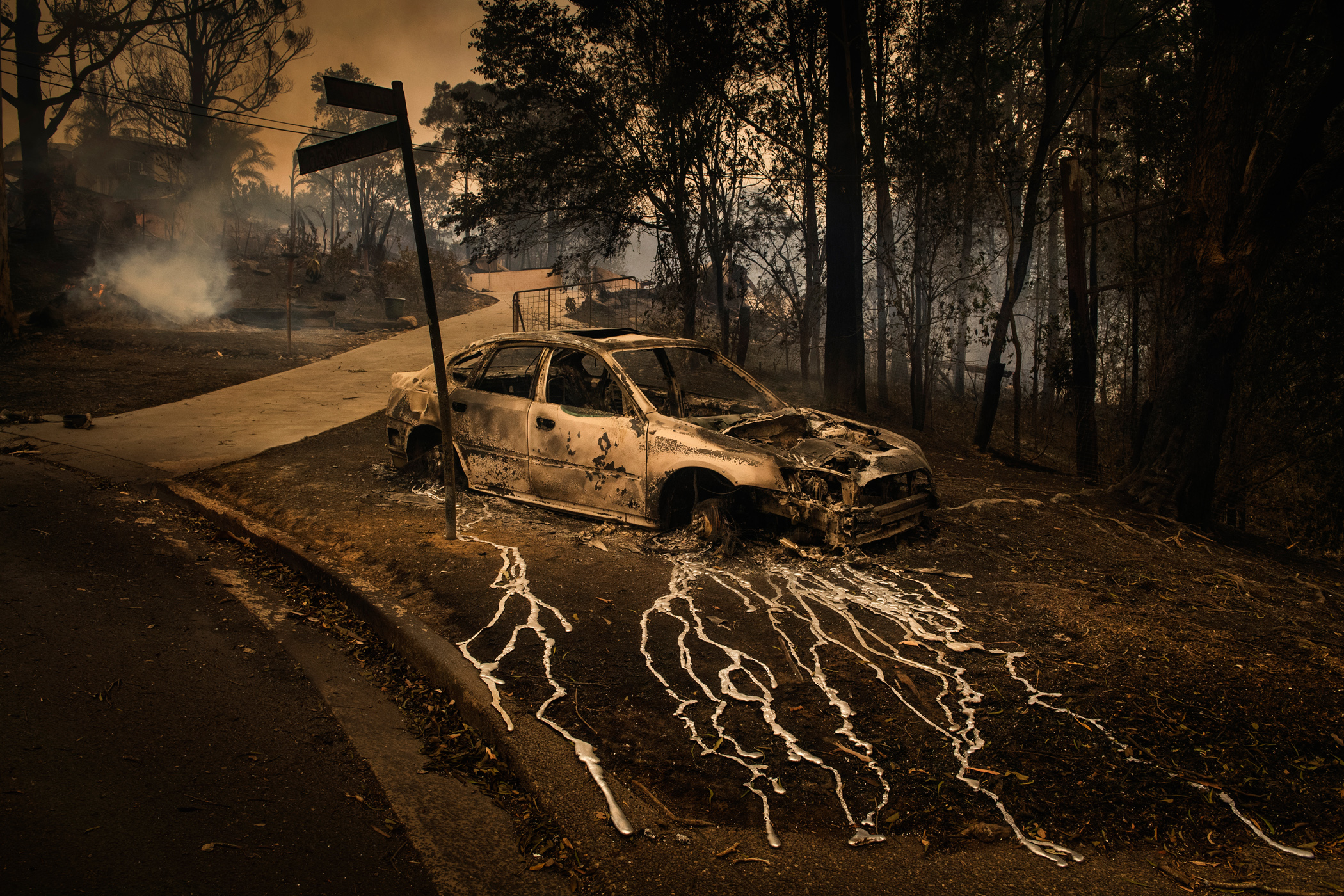
A melted car in Conjola Park, NSW. 31 December 2019.
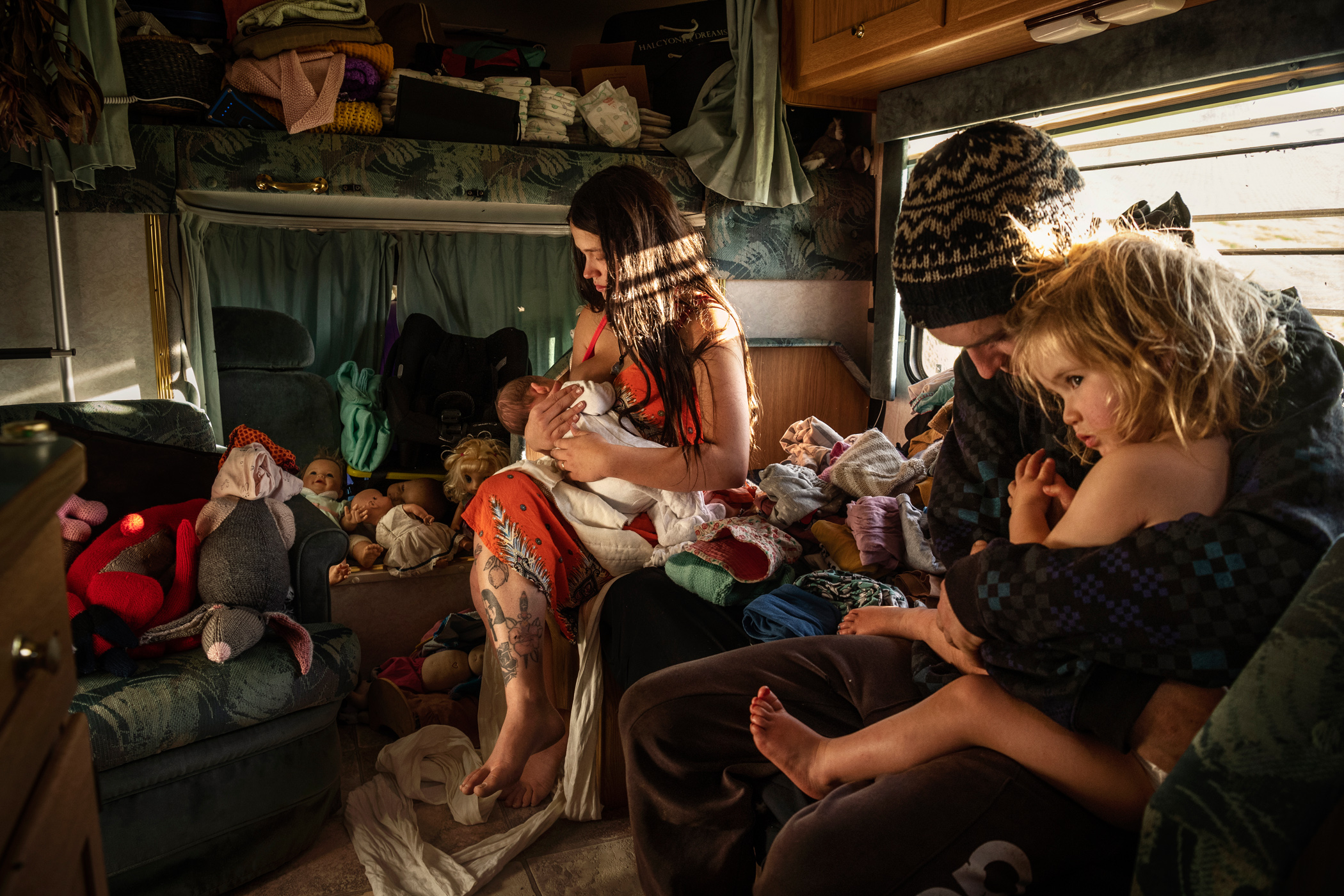
A family made homeless by the fires, living in a caravan outside Cobargo, NSW. 5 May 2020
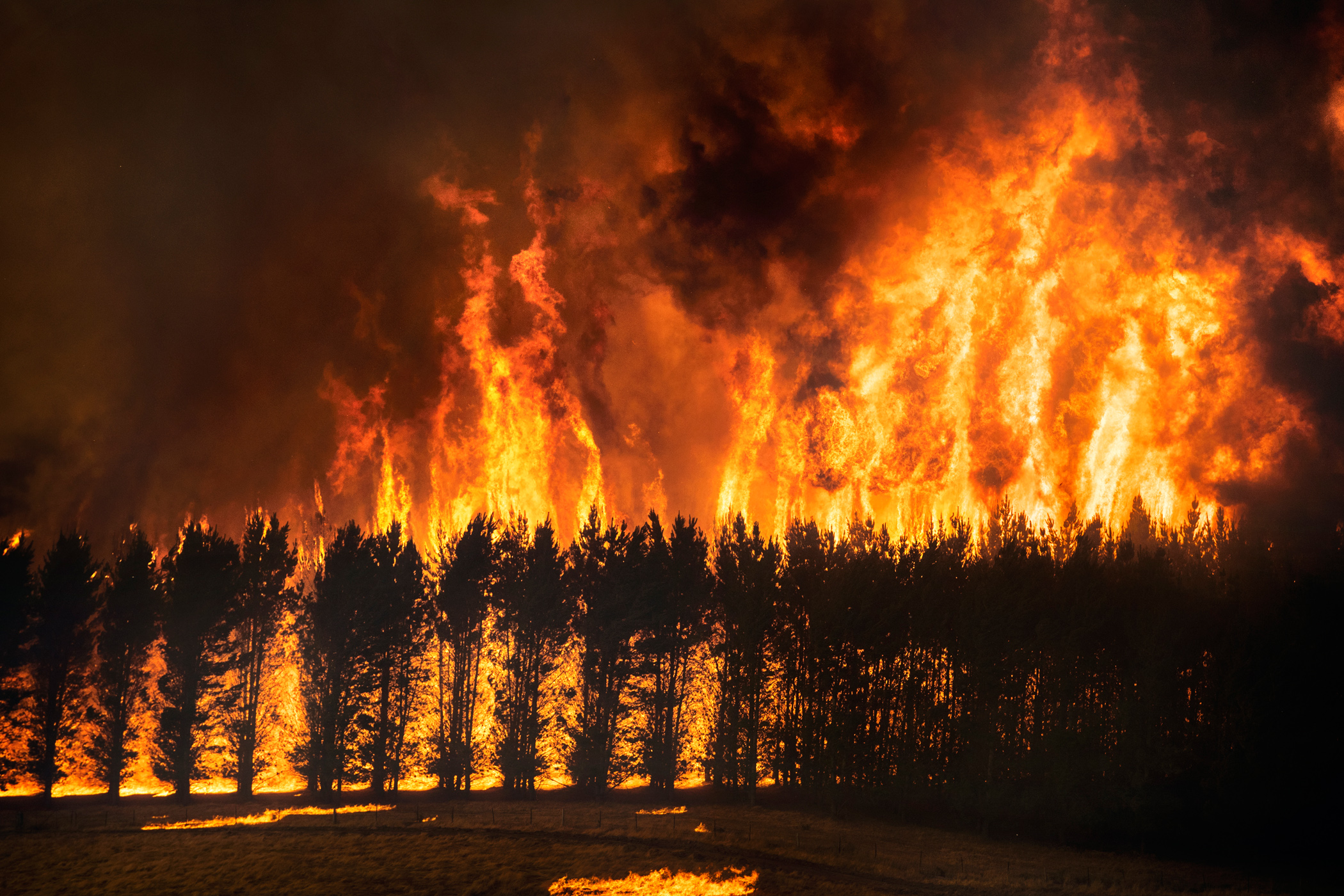
A huge blase near Maragle, NSW. 10 January 2020.
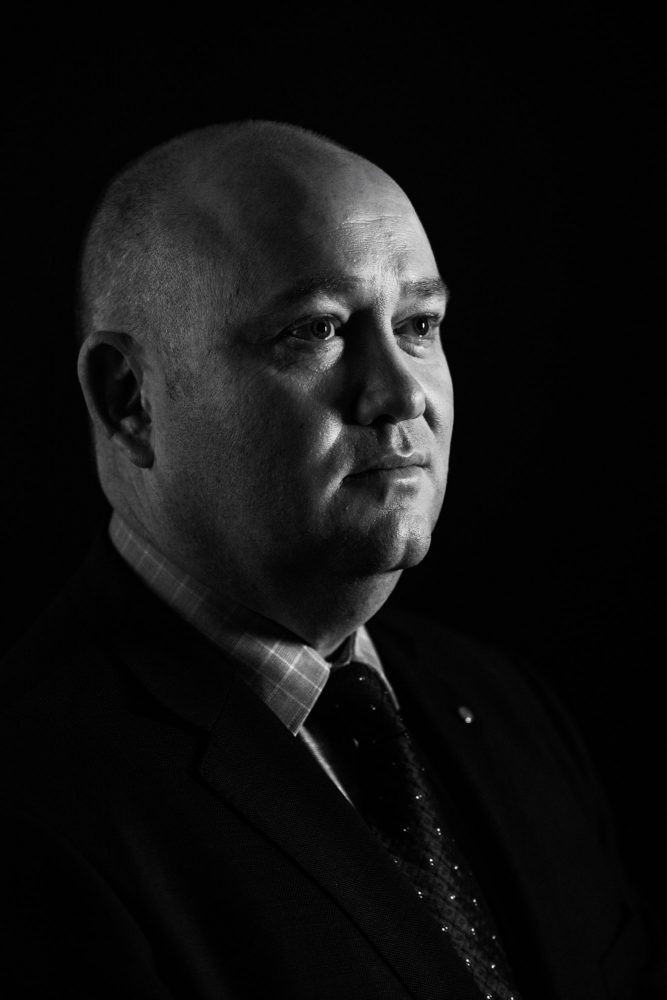
Shane Fitzsimon AFSM
Commissioner of Resilience, NSW.
“On the back of so much adversity, so much tragedy,
the thing that inspired me every day was the good will,
the compassion, the care, the outpouring of love and
support that was unconditional from so many people.
The men and women on the front line that were involved
in the firefighting effort, but also the communities that
were making decisions in times of extraordinary anxiety
and fear, and right through to people locally and from
afar that wanted to help. It restored your faith in humanity.”
The colour of the sky, the blackness. It was day, but it was night-time. Everything was just
Brendon O’Connor, Captain, NSW RFS Balmoral Village Brigade
so black, burning, the glow of the fire. Homes were burning. All the trees were burning. I remember seeing so many firefighters on the ground through sheer exhaustion.
In the animal kingdom, long before a natural disaster occurs, there is an exodus. The first species to leave are the birds, as if they know what is coming. Like a portent or omen, they fill the skies. They fly the farthest and fastest.
Next are the ground dwellers: wild dogs, deer, antelope and kangaroos. Even the insects, the field mice, and the reptiles slither and slide as fast as their bellies can carry them.
Some species are not so lucky, not so fast, not so agile. They seek refuge wherever they can, in the treetops, under logs, beneath the ground. Along with the injured, the old and the very young.
But there is one species on this planet that repeatedly turns to face danger. That runs towards it. A biped with binocular vision, whose instinct is fight, not flight.
The human.
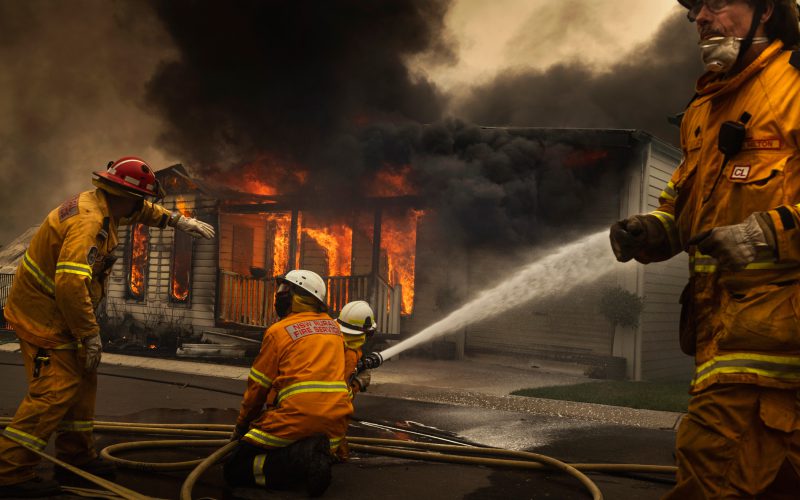
The Warriors
Hardwired to help
The firefighter who instinctively turns to face danger, putting his or her own life on the line to save strangers, exhibits the same primal fight-or-flight instinct as our animal brothers. Only we have developed strategies and tools. We have learnt techniques, created technologies and accrued knowledge that makes us uniquely capable of dealing with existential threat.
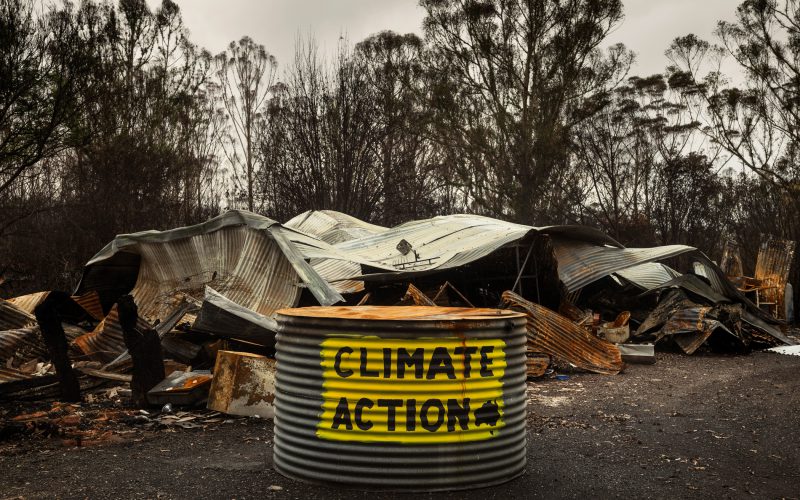
The Worriers
The canaries in the coalmine
We need the sentinels, the Worriers, the nervous amongst us who are genetically programmed to watch and look for threats: to see risk. They are the early warning device that prepares us for danger. The climate change experts, the meteorological scientists, the Indigenous Australians who have accrued wisdom from the land for thousands of years and who are constantly warning us of signs of danger.
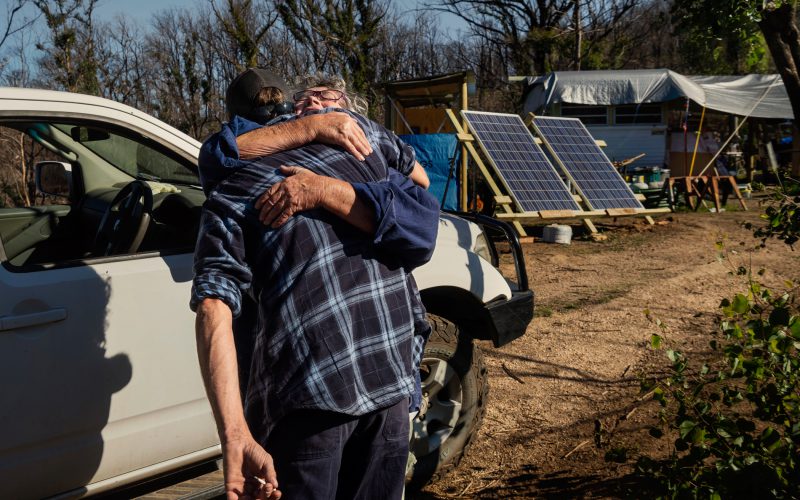
The Connectors
The unlikely heroes
We need the organisers. The third and last group – the Connectors- are the social animals amongst us, the happy, optimistic, ‘she’ll be right’ members of our communities. While the other two groups are likely to be introverts, independent and isolated, the connectors are extroverted social animals and can influence large groups of people. They are the fundraisers, the animal sanctuary workers, the rebuilders, the mobilisers, the project managers, the leaders.

